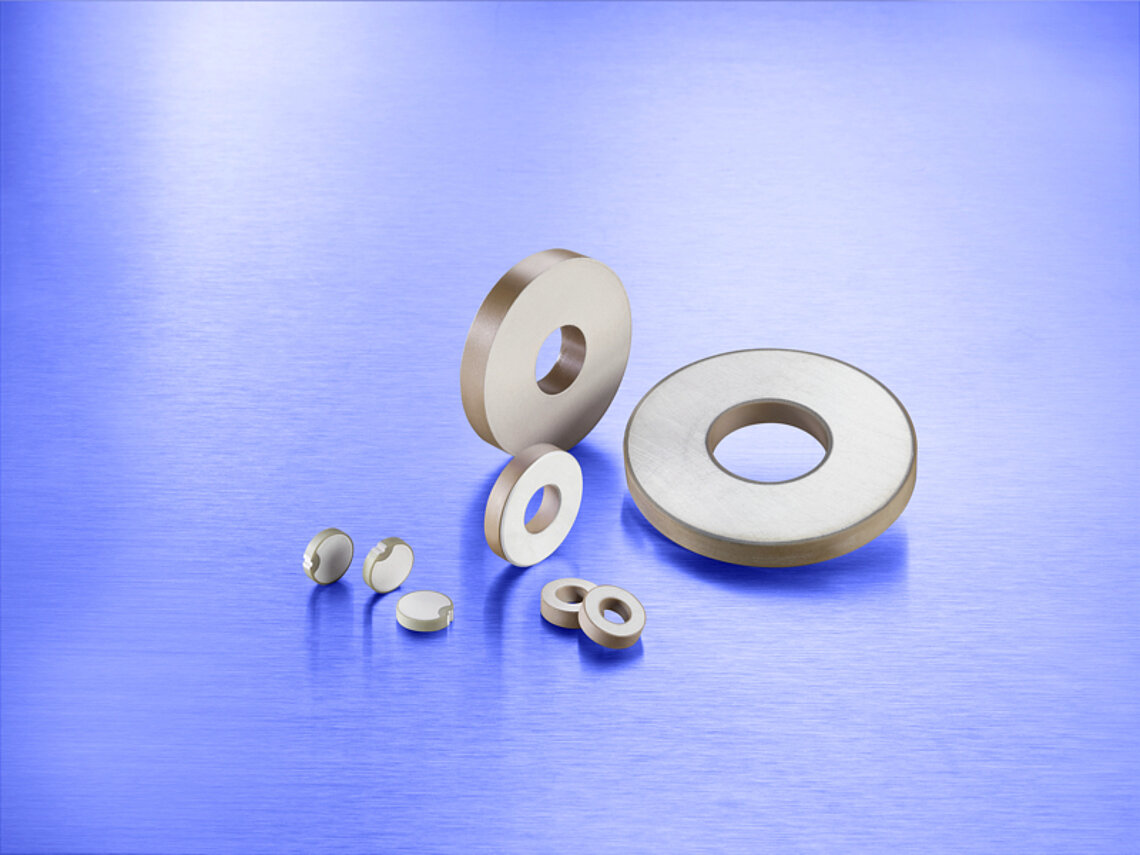Advancing eco-friendly piezoceramic development
Plochingen/Southampton, 30 November 2020. From producing medical protection masks to cleaning baths for eyeglasses – power converters made of advanced piezoceramic materials are the hidden driving forces in a wide range of applications. Industrial ceramics producer CeramTec specialises in piezoceramic materials for power transducers that are ideal for high-power ultrasonic applications, with a focus on ultrasonic cleaning, welding and sonar systems.
“The key property of piezoceramic, which gives it its edge over other mechanical processes, is the material’s ability to directly convert electrical energy into mechanical energy and hence movement,” says Hans-Jürgen Schreiner, Head of Applications Solutions, Industrial Solutions, at CeramTec. “As a result of many years of in-house R&D, our Sonox piezoceramic materials for high-power ultrasonic applications have achieved a top quality level that we can consistently reproduce and deliver in high volumes.”
Piezoceramics achieving more energy efficiency
The material’s excellent mechanical stability, low dielectric loss and high conversion efficiency between electrical and acoustic energy make it ideal for applications where a high-frequency sound needs to be generated. “Our materials are widely used for ultrasonic end device cleaning, be it small-scale eyeglass cleaning baths for opticians or big industrial cleaning facilities deploying ultrasonic tanks where the piezoceramic transducers generate ultrasonic waves, enabling a fast and effective cleaning method that cleans away a range of substances, including oil, rust or bacteria, while at the same time being more surface-friendly and more energy-efficient than other mechanical processes,” explains Hans-Jürgen Schreiner.
Ultrasonic welding vital for medical mask production
Ultrasonic welding as another key application for CeramTec piezoceramic power converters takes advantage of the friction energy generated by the ultrasound at the boundary surfaces and is a very fast, cost-effective and reliable joining technology that is in times of Covid-19 more important than ever: For the industrial production of medical protective masks, ultrasonic welding machines are used to produce the hem of the masks and join multiple layers. The ultrasonic energy is supplied to the materials to be joined via a so-called sonotrode, which amplifies the ultrasound generated by the piezo composite oscillator. This oscillator is made up of two or more piezoceramic rings, which play the main role in the ultrasonic welding process. CeramTec’s low loss materials and tolerances ensure maximum efficiency of process by minimising mechanical and electrical losses in the transducer and system.
Apart from sonar system applications such as in large ships to detect water depth and schools of fish, the company’s piezoceramic components also deliver quality assurance in mechanical, plant and tool engineering through non-destructive material testing in the production process to assess whether materials are free of defects and inhomogeneities. Here, a piezoceramic transmitter is connected either directly or via a liquid or solid coupling medium to the workpiece to be tested. The piezoceramic transducer then radiates an ultrasonic wave package into the test piece for defects or inhomogeneities to be reflected.
Sustainable piezoceramic development on the agenda
As part of CeramTec’s ongoing material development, the company is also working on developing lead-free piezoceramics. “The search for lead-free alternatives to lead zirconate titanate (PZT) ceramics has become a vital topic in functional material research as PZT has been identified as a ‘substance of very high concern’ (SVHC), which is currently being evaluated in the EU’s ‘Restriction of Hazardous Substances Directive’ (RoHS),” explains Hans-Jürgen Schreiner. The major challenge lies in matching the properties of conventional lead-based ceramics and CeramTec is developing a material based on lead free compounds using an environmentally friendly process, which might potentially be used for specific applications in the field of high-performance ceramics and is from today's point of view, ecologically harmless.
